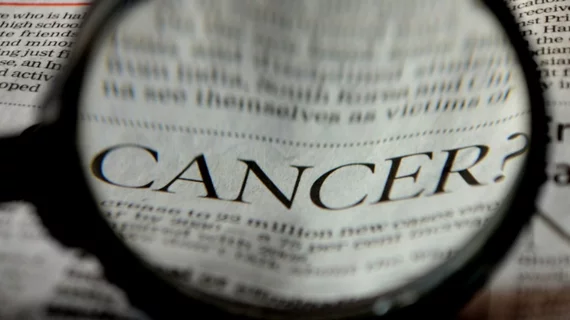Global study connects cancer, takotsubo cardiomyopathy
A study published July 17 in the Journal of the American College of Cardiology has revealed a strong link between cancer and takotsubo cardiomyopathy, or “broken heart syndrome.”
Though takotsubo syndrome (TTS) has been recorded in the context of cancer and chemotherapy before, senior author Christian Templin, MD, PhD, of University Hospital Zurich, and colleagues said the pathophysiology of the condition remains unclear today. Some researchers hypothesize chemo has more to do with the development of TTS than a malignancy itself; others wonder whether a cancer diagnosis could emotionally trigger a case of takotsubo.
The team analyzed 1,604 TTS patients enrolled in the International Takotsubo Registry, which was first established eight years ago in 2011. The population was divided into participants with and without malignancy to investigate differences in clinical characteristics and assess both short- and long-term mortality, and TTS patients with and without cancer were measured against a similar group of acute coronary syndrome patients with and without cancer.
Of the whole pool, 267 patients—16.6%—presented with a malignancy, the authors said. The most frequent malignancy was breast cancer (26.2%), followed by tumors affecting the GI system (16.1%), respiratory tract (15.4%), internal sex organs (14.6%) and skin (13.1%). The overall presence of cancer in the TTS cohort was 18.2%; in the ACS cohort it was a significantly lower 11.1%.
Templin et al. reported patients with malignancy were older, and while they were more likely to have physical triggers than those without cancer, they were less likely to have emotional triggers. Short-term outcomes were similar between patients with and without cancer, but long-term mortality was higher in patients with a malignancy.
“We found that in TTS patients with malignancy, the inciting event is an emotional trigger less frequently than in those without malignancy,” the authors wrote in JAHA. “Even though the psychological burden of a malignancy diagnosis could potentially increase sympathetic output, this was not the case in our analysis as emotional stressors were less common in patients with malignancy compared with those without.”
They said TTS patients with cancer more frequently required acute cardiac care treatment (26.7% vs. 19.4% in patients without malignancy) and had a greater need for invasive or noninvasive respiratory support (23.7% vs. 15.7%). In-hospital mortality for cancer patients was 6.7%, compared to 3.4% in TTS patients without cancer.
Templin and colleagues said their work contributes to a paucity of data on the subject, but further studies are warranted. The authors said future research might focus on the analysis of specific malignancy types and the metabolic and neurohormonal factors associated with them. It could also be helpful, they said, to study the effects of distinct therapeutic molecules in TTS patients with and without cancer.
“The findings of the present study have unraveled a high prevalence of malignancy in TTS patients,” the team wrote. “Our findings suggest that specific malignancy-associated factors impact the development and outcome of TTS. Therefore, to fully understand the pathophysiology of TTS and the role of malignancy in triggering or affecting outcomes, this subset of patients deserves further investigation.”

